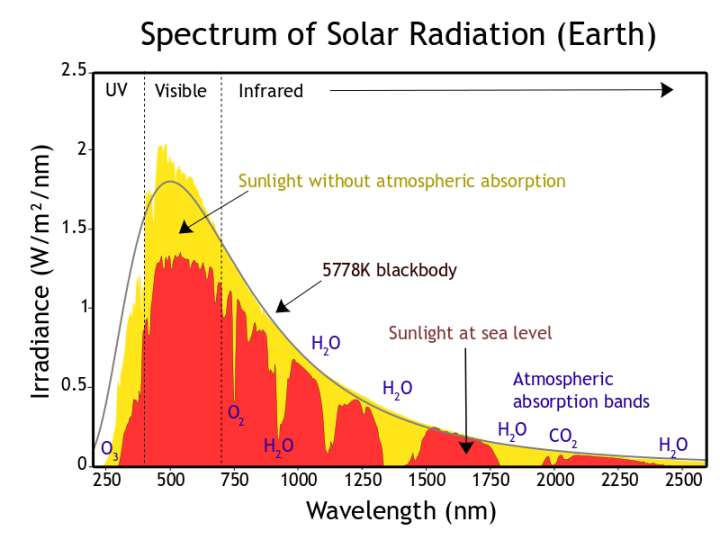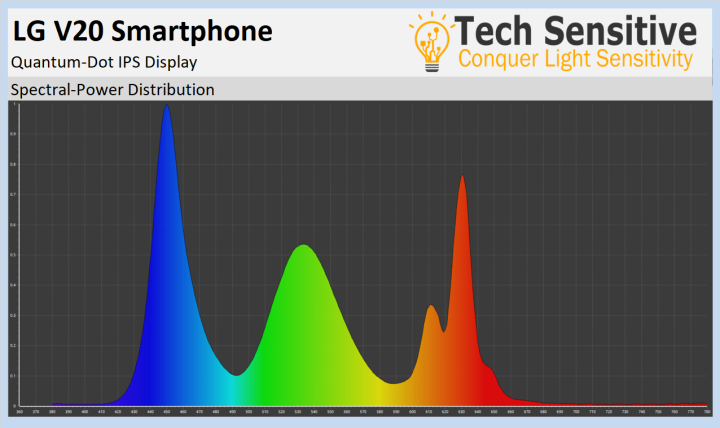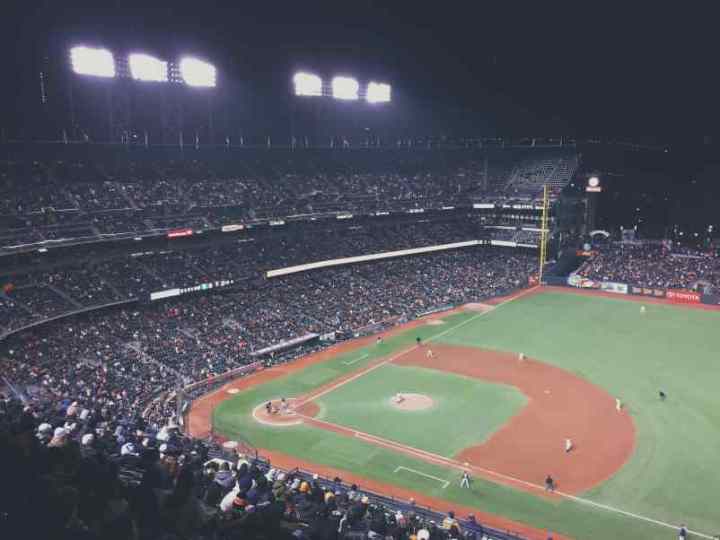Sunlight is the best light, as long as it’s not too bright. You’ll see that mantra repeated throughout this site. But, why is sunlight the best? What makes it better than the displays on our electronics? Or the light in the grocery store?
First, some background
That superheated firey ball of warmth our planet orbits around gives off a ton of energy (literally, 4 million tonnes of matter is converted to energy per second). That energy emitted isn’t just the light we see; it’s everything from invisible cancer-causing UV-A and B energy rays to the long-wave energy we feel as heat on our skin.

Inside that range of energy, specifically the energy between roughly 400 and 780 nanometers, is energy our eyes convert to signals that are sent to our brains, forming our vision. We refer to energy in the range of 400-780nm as ‘light’ because our eyes are adapted to ‘see’ this type of energy.
Sun emits mostly equal amounts of all color
A byproduct of the sun emitting such a wide range of energy is that it also provides relatively equal amounts of each color that makes up the light we see. Mind you, some of the short-wave, high-energy blue energy gets deflected by gas molecules in our atmosphere (you’ll see the drop-off of blue in the graph below, which instead reaching the surface of Earth it colors our sky blue) but the light that arrives to the Earth’s surface is otherwise mostly equal in color.
Below you see an SPD graph illustrating the composition of sunlight. Importantly all colors are present and mostly equal in intensity. This is the pinnacle of well-balanced light.

It is this distribution of color that looks best to us and is the easiest to tolerate. Chalk it up to millions of years of evolution. Note the reduced presence of blue light, especially relative to the much higher proportions of the longer-wave red, yellow and green light.
The problem with most of our man-made light sources is that they are almost impossible to recreate the rich distribution of color that sunlight provides. Hundreds of millions of dollars are spent each year in research and development for technologies to get us closer to this Holy Grail of light reproduction.
LED Displays
Those most sensitive may struggle with light emitted from the displays of electronic devices. These displays commonly use LEDs to provide the display brightness and can be difficult to tolerate due to the color composition.
The problem with LEDs begins with how they work. Most LEDs produce only blue light, which is then partly converted to green and red by way of phosphors, resulting in a somewhat white appearance. Unfortunately, phosphors don’t do a great job of converting that blue light to other colors.
Making matters worse is that in order to achieve particularly vibrant colors, displays are engineered to emit high intensity light in narrow bands of colors that our retinas are most sensitive to. These high intensity narrow bands of color are the signature characteristics of display technologies like quantum dot and a new generation of VESA-certified HDR displays.
You will see in the example below, quite unlike the sunlight measurement, that the LED-powered quantum dot LG V20 smartphone display emits high intensity narrow bands of blue and red, with a slightly wider distribution of energy in the range of green. The end result is a display that appears somewhat blue but also displays rich saturated colors, which those most sensitive may find difficult to tolerate without color filters.

The quantum dot display of the LG V20 illustrated above is relatively consistent with many other quantum dot and HDR displays coming on the market.
Metal Halide
Metal halide gas discharge lights are commonly used in a commercial-industrial applications, like stadiums and large warehouses, including retailers like Costco. They emit an extraordinary amount of light relative to their size and are very efficient.

In terms of the quality of light the metal halide lights provide reasonable color distribution. The light composition includes higher levels of cyan, green and yellow with a notable deficiency of reds. In terms of tolerance to this light, you will see below that the color composition contains some inconsistencies but overall it’s not particularly offensive and should be reasonably tolerated for all but those most sensitive.

Metal halide lights unlike LEDs do not emit high levels of blue light relative to other colors.
Low Pressure Sodium
The most common use of low pressure sodium lighting is that of street lights. Low pressure sodium lights are easily identified by their signature monochromatic yellow appearance.

One of the features of low pressure sodium that makes it popular for use in street lights is that the color emitted is mostly in a narrow range that our eyes are most sensitive to. If you have ever noticed that everything appears brighter when you put on yellow-tinted glasses, this is why. That same sensitivity makes low pressure sodium street lights appear brighter to us and therefore operates more efficiently.
The result is a bright appearance relative to the actual amount of light emitted by this type of bulb.
Low pressure sodium lights emit light almost entirely in the green, yellow and amber and should be well-tolerated.

There is a movement to replace these low pressure sodium streetlights with the LED variety, with mixed results.

I wonder how a GB-r LED backlit display fare. Unfortunately I haven’t seen anyone measure the light spectrum of one in a review though, and they are quite obscure.
Good article: https://pcmonitors.info/articles/the-evolution-of-led-backlights/
LikeLike